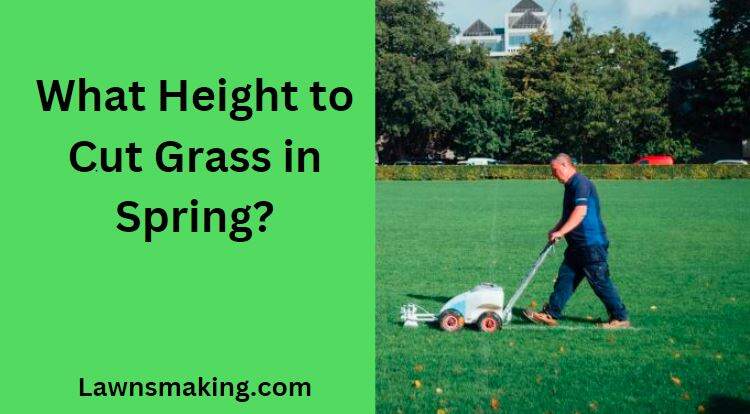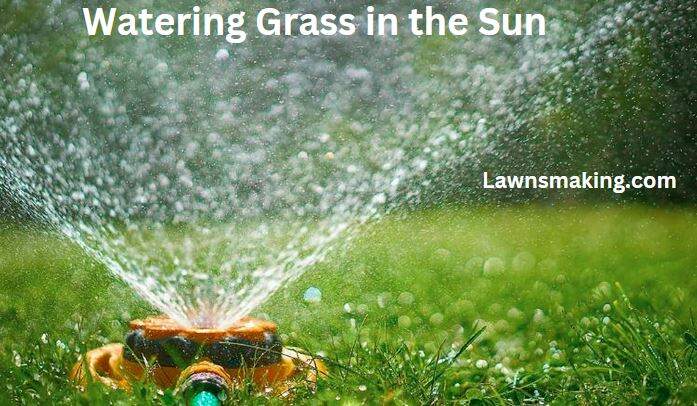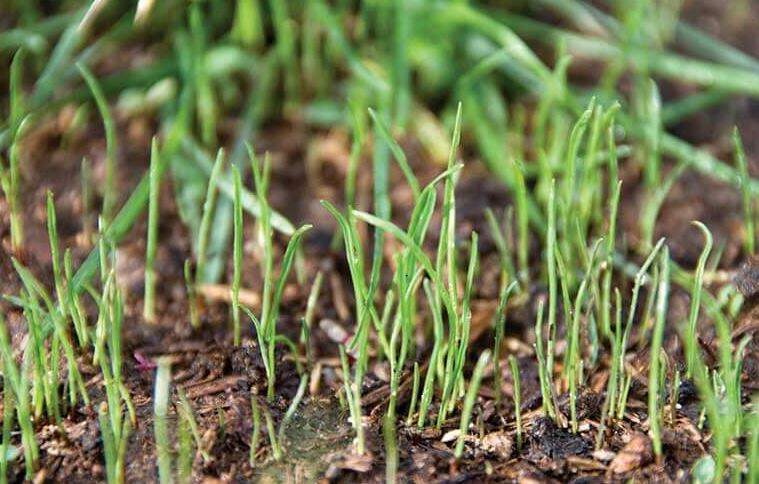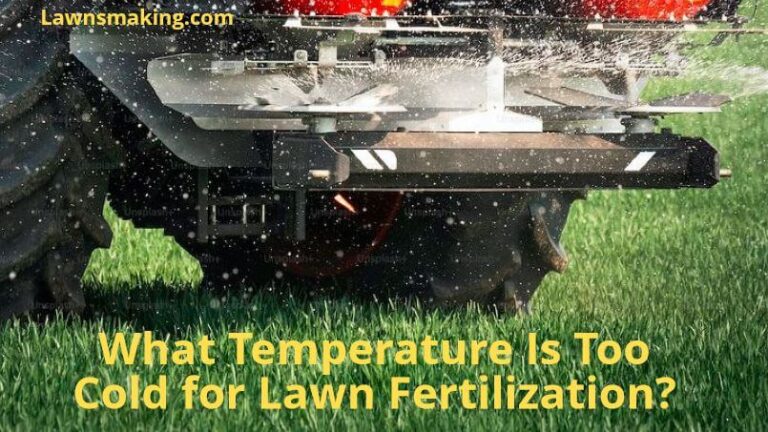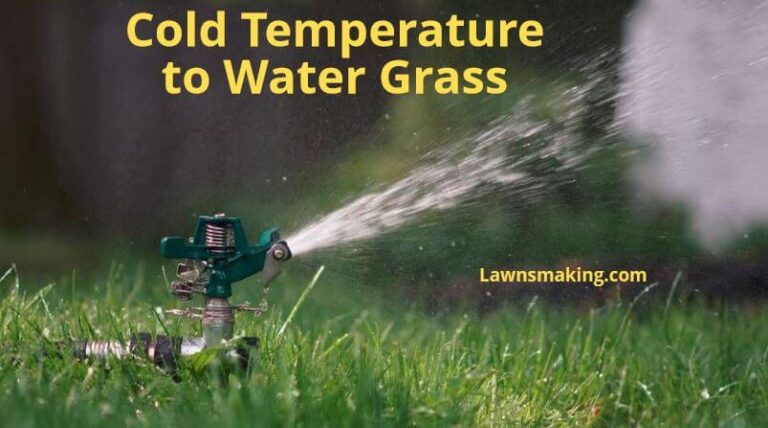
As winter’s chill approaches, the imminent frost threatens your nurtured grass seedlings. Picture the effort invested in your soon-to-be lawn—you wouldn’t want vibrant green to become a brown nightmare. That’s why we want to explore how to protect grass seedlings from frost.
You can protect your grass seedlings from frost by covering them with frost blankets or straw mulch to provide insulation. Additionally, select frost-resistant grass varieties like Kentucky bluegrass and Bermuda grass for your lawn to ensure it thrives despite the cold.
In addition to exploring the impact of frost on seedlings, I will also cover key frost protection strategies, from opting for frost-resistant grass varieties to when you should consider seeking professional advice for frost protection.
Will Frost Kill New Grass Seed?
Frost doesn’t pose a severe threat to grass seeds, meaning it can’t kill them. However, it can interrupt the germination process of grass seeds by significantly delaying the emergence of grass seedlings.
According to the National Weather Service, frost can cause damage to plants when temperatures drop below 32°F (0°C), significantly reducing plant growth. Also, note that mild frosts can do minimal harm to grass seedlings, and extreme ones can do irreversible damage.
How to Protect Grass Seedlings From Frost: 8 Proven Strategies

Frost damage interrupts the plant’s ability to transport nutrients and water, explaining the discoloration, wilting, and death in severe situations.
Frost can also hinder photosynthesis, which is critical for plant growth, and this happens when it damages your grass’s chloroplasts. Consequently, understanding the devastating impact of frost on grass seedlings highlights the importance of efficient frost protection strategies.
Here are eight strategies that will help you protect your grass from frost in cold weather
1. Select Frost-Resistant Grass Varieties
Grass varieties like fescues and the Kentucky bluegrass are resilient to frost. These grass species can withstand and adapt to chilly temperatures.
Moreover, a British study on grass survival reveals that most grass species die when temperatures drop to -15°C (5°F), but the Kentucky bluegrass has a 25% survival at -15°C (5°F).
When selecting grass varieties for your lawn, frost resistance should be a vital consideration, primarily if you reside in regions that experience cold winters and spring frosts.
| Grass Variety | Frost Tolerance Rating | Description |
| Kentucky Bluegrass | High | It is known for its excellent frost resistance and lush, green appearance. It thrives in cold climates. |
| Fescues | Moderate to High | Fescues, including creeping red fescue and chewings fescue, exhibit good frost tolerance and adaptability. |
| Perennial Ryegrass | Moderate to High | This grass type can handle light to moderate frosts and is often used for overseeding in colder regions. |
| Bermuda Grass | Low to Moderate | While less frost-resistant, Bermuda grass can survive light frosts with proper care and preparation. |
| Zoysia Grass | Low to Moderate | Zoysia grass varieties are more suitable for regions with milder winters due to their lower frost tolerance. |
| St. Augustine Grass | Low to Moderate | This grass species prefers warmer climates and has moderate frost tolerance. |
2. Timing Is Crucial: Consider the Best Planting Dates
Planting grass seedlings during appropriate seasons will help minimize the risk of frost damage.
Early spring, early fall, and later summer are ideal times to sow grass. However, this can change depending on your local climate.
- In early spring, soil warming creates favorable seed germination and growth conditions.
- Alternatively, early fall and late summer give you an additional window of opportunity, allowing grass seedlings to develop strong and deep root systems before winter.
It will help to consider your local climate and frost risk before planting grass seedlings.
Likewise, it will be best to be prepared to adjust your planting schedule if late frosts are expected in your area, as this will give your grass the best chance of survival.
3. Proper Soil Preparation
To insulate and protect your grass from frost, consider preparing your lawn with organic matter while ensuring proper drainage.
Soil preparation is crucial in protecting grass seedlings from frost.
You can improve soil quality by incorporating organic matter like well-rotted manure or compost.
Besides enriching the soil with essential nutrients like Nitrogen, Potassium, and Phosphorus, the organic material enhances the soil’s heat retention ability.
Well-draining soil is essential because compacted and excessively wet soil can exacerbate frost damage.
Adequate drainage helps prevent excess moisture from accumulating around your grass seedlings’ roots, reducing the risk of frost damage.
4. Mulching
Mulch acts as an insulating blanket—maintaining a stable soil temperature. Moreover, it protects grass seedlings from extreme cold. Additionally, mulching is a proven method for safeguarding grass from frost.
You can opt for mulch if you fancy a natural insulator capable of creating a stable microclimate around the base of your grass seedlings.
Mulching also helps maintain even soil temperature, preventing rapid fluctuations that harm young grass seedlings.
Furthermore, mulch is a barrier between the ground and the chilly air—reducing the risk of direct frost exposure.
Organic mulch like wood chips, shredded leaves, and straws effectively act as natural barriers between frigid air and the ground.
5. Using Frost Blankets and Cloths
Designed to protect plants from frost damage, frost blankets and cloths are specialized covers that create a microclimate around seedlings.
Frost blankets and cloths trap heat and prevent frost from settling on grass seedlings.
These covers are usually made from lightweight and breathable materials that allow sunlight and air to reach your grass seedlings while offering protection against freezing weather.
To effectively use frost blankets and cloths, consider draping them over your grass seedlings before the onset of frosty weather.
Also, remember to secure the edges to the ground. This will ensure they stay in place throughout the night.
Here is the right procedure to use frost blankets and cloths to protect your grass seedlings from frost:
- Step 1: Prepare frost blankets or cloths.
- Step 2: Lay the blankets or cloths over the grass seedlings.
- Step 3: Secure the edges to the ground using stones or any heavy object to prevent wind from lifting them.
- Step 4: Ensure no gaps or openings could let frost in.
- Step 5: Remove the blankets or cloths in the morning once the frost has melted.
- Step 6: Store the blankets or cloths properly for future use.
6. Monitor Weather Conditions

Stay informed about weather forecasts if you want to offer your grass seedlings adequate frost protection.
Frosts can be unpredictable. Knowing when they will likely occur will help you take timely action to prevent potential damage.
Fortunately, weather forecasts offer frost warnings and information on anticipated temperature drops.
Monitoring these forecasts, especially during transitional seasons, will help you decide when to implement protective measures against looming frost.
Your local news and radio, weather apps and websites, and weather stations with mobile alerts are convenient ways of monitoring your area’s weather conditions as you prepare to protect your grass seedlings from frost.
Weather forecasts also let you take a proactive approach regarding frost protection, which could be the difference between thriving grass seedlings and frost-damaged grass.
7. Winterizing Your Lawn
Offering grass seedlings frost protection is essential for survival in chilly winter weather. However, making your lawn more resilient to winter conditions is equally important.
Lawn care practices like aeration, fertilization, and appropriate mowing techniques can enhance your lawn’s resilience to winter conditions.
General lawn care practices are the cornerstone of improving your lawn’s ability to withstand cold weather.
- For instance, regular and timely fertilization ensures your grass gets the necessary nutrients to stay vibrant, healthy, and robust.
- Meanwhile, proper aeration improves soil drainage and structure—reducing the risk of frost-related issues.
- Lastly, proper mowing techniques like maintaining the recommended grass height will prevent grass damage and stress during winter weather.
8. Consulting a Lawn Expert
Professionals have the experience and knowledge to assess your lawn’s situation and recommend personalized frost protection solutions.
Here’s a table that highlights situations requiring professional advice for frost protection.
| Scenario | Description | Recommended Actions |
| Extreme Frost-Prone Areas | Living in regions with extremely harsh and frequent frosts may necessitate professional guidance. | Consult with a local lawn expert or landscaper to assess your lawn’s needs and develop a tailored frost protection plan. |
| Complex Lawn Issues | Professional advice can be valuable if your lawn faces multiple challenges beyond frost, such as diseases or poor soil quality. | Seek the expertise of a lawn specialist who can comprehensively address frost protection and other lawn health issues. |
| Large and Expansive Lawns | Managing extensive lawns during frost events can be daunting; professionals can provide efficient solutions. | Consider hiring a professional landscaping service for frost protection for larger lawn areas. They have the resources and experience to manage expansive spaces effectively. |
Are There Budget-Friendly DIY Methods for Frost Protection?
You can opt for budget-friendly DIY methods for frost protection to safeguard your grass seedlings against frost. Cost-efficient DIY methods for frost protection provide practical solutions to safeguard your grass seedlings from frost.
Here are two frost protection methods that won’t break your budget:
DIY Frost Covers
- Craft small frost covers using empty plastic bottles or milk jugs
- Cut off the bottom of these containers and place them over individual seedlings
- These mini greenhouses will trap heat and protect against frost
Row Covers Made Easy
- Create a framework over your lawn using PVC pipes or metal hoops
- Drape clear plastic sheeting over the framework to create row covers
- Remove the row covers during the day to allow your grass seedlings to receive sunlight, and cover the seedlings at night.
What Watering Strategies Can Prevent Frost Damage?
Effective watering can mitigate the risk of frost damage by promoting soil temperature stability.
Additionally, proper watering techniques enhance your lawn’s insulation, thereby safeguarding it from the effects of frost in frigid months.
These best watering strategies to prevent frost damage on your grass include:
Pre-Frost Watering
- Water your lawn or grass seedlings deeply one or two days before an imminent frost.
- Moist soil can hold more heat, protecting grass seedlings from frigid temperatures.
Avoid Evening Watering
- Do not water your lawn in the evenings, especially during winter or cold months.
- Excess moisture on the grass can freeze overnight, leading to frost damage.
What Should I Do If My Grass Seedlings Have Already Been Exposed to Frost?
If your grass seedlings have already been exposed to frost, remove dead or damaged parts using pruning shears and water the remaining grass gently.
Grass seedlings exposed to frost need your urgent attention to help minimize damage and jumpstart their recovery.
The early assessment of frost-exposed grass seedlings helps you improve their chances of recovery from frost damage.
Here are some immediate actions you can take if your grass seedings have already been exposed to frost:
Assess the Damage
- Check the grass seedlings for frost damage by looking for signs like wilting and discoloration.
- Use pruning shears to remove any damaged or dead plants.
Water Gently
- Give frost-affected grass seedlings water to help them recover.
- Avoid heavy watering as this can further stress the plants.
Learn for Next Time
- Use the experience to prepare for future frost events, as this will help you implement protective measures earlier.
Final Thoughts
Grass seedling protection is essential for lawn thriving. By understanding the impact of frost on grass, lawn enthusiasts and homeowners can implement effective frost protection strategies that can ensure the survival of their grass seedlings and lawns.
Our exploration of “How to protect grass seedlings from frost” will equip you with different proactive strategies for maintaining healthy grass seedlings in freezing or chilly weather.
Opting for frost-resistant grass varieties can help ensure grass seedlings survive and flourish. For that reason, the climatic conditions in your area will guide you on the best way to protect your grass from frost damage.
